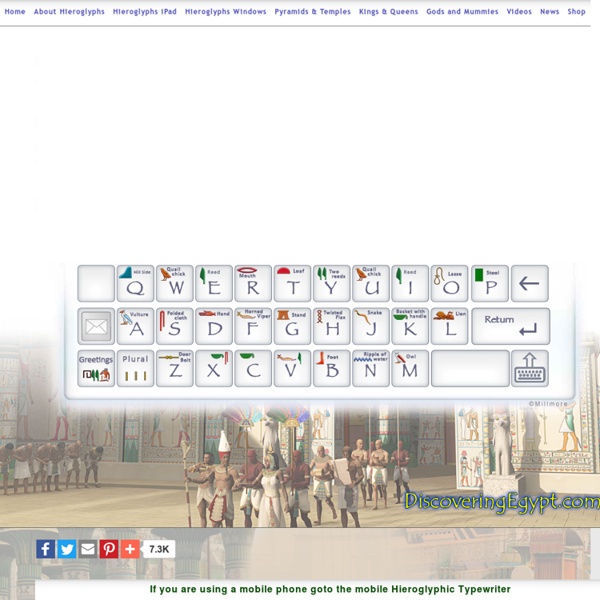



How to Make a Mummy! - National Geographic Kids Want to make sure a body gets reunited with its spirit in the afterlife? Then join us here at National Geographic Kids as we head to Ancient Egypt to see how they made their mummies…! 1. First wash the dead body in wine and Nile water. 2. 3. 4. 5. Cool but creepy, eh?! * They had some funny ideas, those Ancient Egyptians! Illustrations: Marek Jagucki Be sure to read our other fab features about Ancient Egypt, too… 2,401 Likes
Egyptian Mummies Ancient Egyptian Games To understand Egyptian mummies you have to first know about their religious beliefs. Ancient Egyptians believed in many gods and that when a person died they passed into an ‘afterlife’. The thought that the individual would have a life that was very close to the one that they lived in with everyone else. In order to have that kind of life, their body needed to be preserved and they needed to be buried with all of the possessions that they would take with them on their journey into the afterlife. Ancient Egypt had a successful society that lasted over 3,000 years. The process involved to create a mummy properly can take up to 70 days. 1} The body must be purified and washed. 2} All internal organs were removed, however, they left the heart in place. 3} They filled in the body with a kind of stuffing so that it would look normal. 4} They had to ‘dry’ the body out, so they placed it in a naturally found substance called ‘natron’. Sponsored Links
Ancient Egyptian Schools for Kids - Fun Facts Egyptian School Formal education in ancient Egypt was mostly reserved for the boys of wealthier families. Although there is some evidence that occasionally, girls did go to school and even became doctors. Boys usually started school at the age of 7 and they were taught to read and write as well as mathematics. A recent discovery in Egypt showed classrooms that were set up very similar to todays and there were inscriptions on the walls about the rules for behaving properly in class. From the pictures and images, it seems that classrooms had tables for the children to use to write on and lessons were taught by teachers. Most of the education for both boys and girls came from their mothers and fathers. If a boy attended a formal school they began at the lower grades, what we might consider kindergarten. A majority of the Egyptian population did not receive any kind of formal education. Some young girls were educated in both a formal manner and by their mothers. Sponsored Links